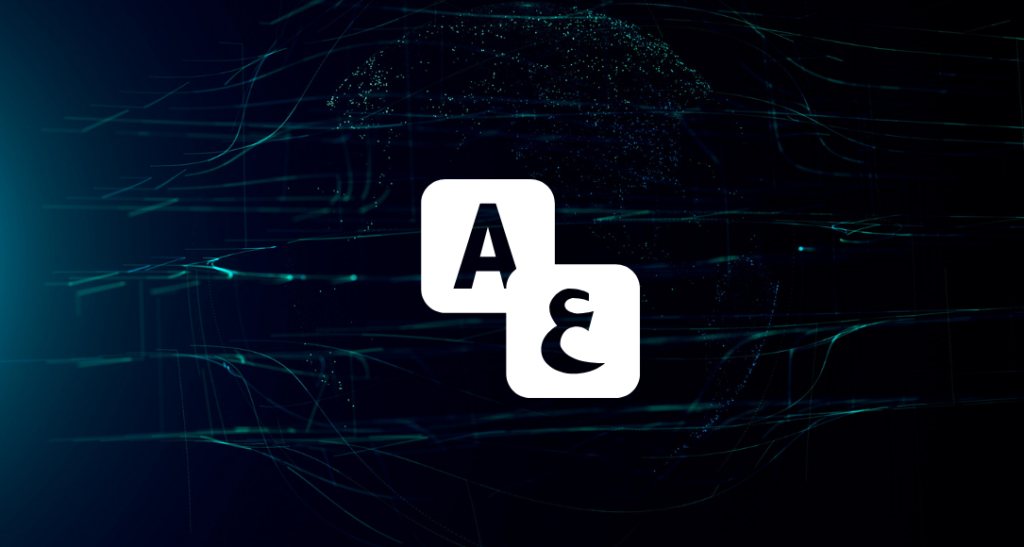Artificial Intelligence is rapidly transforming numerous aspects of our lives, making intelligent communication solutions increasingly vital for businesses and individuals alike. As this technological revolution progresses, the need to bridge the gap between AI capabilities and languages beyond English becomes ever more apparent. Arabic, spoken by over 400 million people across the globe, presents a unique and compelling frontier in this endeavor. Applying AI to the Arabic language unlocks a wealth of potential, but it also brings forth a set of intricate challenges rooted in the language’s rich linguistic structure. This exploration delves into the complexities, potentials, and the evolving future of this crucial intersection, highlighting both the hurdles that must be overcome and the exciting opportunities that lie ahead.
Introduction
To effectively train AI on Arabic, a thorough understanding of its unique linguistic features is paramount. The intricacies inherent in Arabic morphology, syntax, and its diverse dialectal variations pose significant hurdles for natural language processing (NLP) systems.
Arabic possesses a remarkably rich morphological system, where words are constructed through the combination of prefixes, suffixes, and infixes, leading to a vast array of potential forms from a single root. For instance, the root “ع-ل-م”, meaning “knowledge” or “learning,” can produce words like “عِلْم” (knowledge), “عَالِم” (scientist or scholar), “تَعْلِيم” (education), and “مَعْلُومَة” (information). This characteristic presents a considerable challenge for NLP tasks.
In Modern Standard Arabic (MSA), the part-of-speech tag set encompasses over 300,000 tags, a stark contrast to the approximately 50 tags used for English. Furthermore, MSA words exhibit an average of 12 morphological analyses, compared to just 1.25 for English words. This quantitative difference underscores the sheer scale of morphological variations that AI models must learn to navigate when processing Arabic.
Tasks such as morphological analysis, which involves determining all possible morphological analyses for a word, and morphological tagging, which identifies the correct analysis within a given context, become significantly more complex due to this richness. The non-concatenative nature of Arabic morphology, where vowels are interwoven among root consonants, further complicates the application of standard NLP techniques developed for languages with more straightforward word formation. The sheer volume of potential word forms necessitates specialized NLP tools and methodologies tailored specifically for Arabic, moving beyond those typically employed for morphologically simpler languages like English.
Another significant hurdle arises from the common practice of omitting diacritics (short vowel markings) in standard Arabic writing. This absence of consistent diacritics introduces a substantial layer of ambiguity, as a single undotted word can represent multiple distinct words with different meanings and grammatical functions. For instance, the undotted word “كتب” can be interpreted in several ways, such as “he wrote” (كَتَبَ), “it was written” (كُتِبَ), or “books” (كُتُب). This inherent ambiguity means that AI models must develop sophisticated contextual understanding capabilities to accurately disambiguate meaning, a challenge less pronounced in languages with more explicit orthographic conventions.
Additionally, Arabic includes a significant number of irregular plural forms, often referred to as “broken plurals,” which do not adhere to predictable patterns. For example, the singular “قَلَم” (pen) becomes the plural “أَقْلَام” (pens), while “طِفْل” (child) becomes “أَطْفَال” (children). These irregularities further complicate morphological analysis and generation.
Linguistic and Technical Barriers in Arabic NLP
Beyond morphology, the syntax of the Arabic language also presents unique challenges for AI. Arabic allows for both nominal (subject-verb) and verbal (verb-subject) sentence structures, with a relatively flexible word order. While this flexibility contributes to the expressive power of the language, it poses a considerable hurdle for NLP applications that often rely on more rigid syntactic structures.
Accurately parsing sentences and understanding the grammatical relationships between words becomes more complex when the word order is not fixed. This syntactic flexibility necessitates that NLP models developed for Arabic are more robust in handling variations in sentence structure compared to languages with stricter word order rules.
Furthermore, Arabic is a heavily inflected language, meaning that the form of a word can change depending on its syntactic role within a sentence, adding another layer of complexity to syntactic analysis.
The Spectrum of Dialects: A Major Hurdle and Opportunity
One of the most significant linguistic challenges in processing Arabic for AI is the existence of numerous and diverse dialects. These dialects, spoken daily by Arabs, can differ substantially from MSA, sometimes to the extent that the differences are comparable to those between Romance languages and Latin. These variations affect all levels of linguistic analysis, including phonology, morphology, syntax, and vocabulary.
Crucially, these dialects are primarily spoken, often lack standardized written forms, and have limited resources available for NLP research. Consequently, NLP tools and models trained predominantly on MSA data may not perform effectively when applied to dialectal Arabic without specific adaptation.
However, addressing these dialectal variations also presents a significant opportunity to build AI applications that are more relevant, accessible, and culturally attuned to a wider segment of the Arabic-speaking population.
The Arabic AI Data Ecosystem
Compared to languages like English, there has historically been a relative scarcity of large, annotated Arabic language corpora and NLP tools. This lack of labeled datasets is particularly pronounced for less-resourced Arabic dialects and code-switching scenarios, where speakers frequently alternate between Arabic and other languages.
However, efforts are underway to address this gap and create more comprehensive resources. For instance, the ArabicaQA dataset represents a significant step forward as the first large-scale dataset specifically designed for machine reading comprehension and open-domain question answering in Arabic.
In specific NLP tasks like sentiment analysis, datasets such as the one available on Kaggle, containing 330,000 Arabic product reviews, and specialized datasets like ASAD and AraSenTi-Tweet indicate progress in building resources for particular applications.
Furthermore, organizations like Shaip offer conversational and Text-to-Speech (TTS) datasets, including dialectal data from Gulf countries, catering to the growing need for speech-based AI applications. The University of Sharjah has also made strides by developing a deep learning system that utilizes a large, diverse, and bias-free dataset encompassing various Arabic dialects.
While the situation is improving with the emergence of resources like ArabicaQA and dialect-specific datasets, there remains a need for more extensive, high-quality, and diverse datasets, particularly for under-represented dialects and a broader range of NLP tasks.
The quality of Arabic language datasets is just as crucial as their availability for training effective and reliable AI models. Issues such as bias present in the data can lead to unintended consequences, including inconsistent content moderation and discriminatory decisions when AI is applied to Arabic content on social media platforms.
The accuracy of annotations, which involves labeling data for specific NLP tasks, and the representativeness of the data in reflecting the diversity of the Arabic language are vital for ensuring robust model performance.
Recent Breakthroughs and Innovation Pathways
Recent years have witnessed the development of powerful large language models specifically for Arabic, such as AraBERT, AraGPT2, and MARBERT. These models, based on the transformer architecture, have demonstrated remarkable capabilities in understanding and generating coherent Arabic text.
Furthermore, multilingual models like mBERT and XLM-R, while not exclusively trained on Arabic, have also shown strong performance on various Arabic NLP tasks.
To address the challenges posed by dialectal variations, researchers have developed dialect-specific models like MADAR and multi-dialect BERT models, which are pre-trained on diverse Arabic dialects to improve performance on this complex aspect of the language.
For specific NLP tasks, fine-tuned models like AraBERT-summarizer have emerged, demonstrating improved performance in areas like Arabic text summarization. Advancements in Arabic speech recognition have also been achieved through the use of end-to-end models based on the transformer architecture, leading to significant improvements in accuracy.
The development of Arabic question answering datasets like Arabic-SQuAD and the creation of ArabicQA models are further indicators of the progress in enabling AI to understand and answer questions posed in Arabic.
Additionally, the field of neural machine translation has seen substantial improvements in the quality of translations between Arabic and other languages through the application of transformer-based models.
In the crucial area of information extraction, significant advancements have been made in Arabic Named Entity Recognition (NER) through the application of deep learning techniques, enabling more accurate identification and classification of entities within Arabic texts.
Qatar’s groundbreaking Fanar project stands out as the first Arab AI model specifically designed to understand Arabic in all its diverse dialects, trained on an exceptionally large dataset of over 300 billion words.
Moreover, MBZUAI has developed Jais, which is considered one of the most advanced Arabic large language models globally, showcasing the cutting-edge research being conducted in this field.
Leveraging the Unique Features of Arabic for Innovation
Researchers are exploring how the unique features of the Arabic language can be leveraged to create innovative NLP solutions. Research into using dotless Arabic text, inspired by historical scripts, has suggested potential advantages in certain NLP tasks, such as reducing vocabulary size and improving efficiency.
The rich morphology of Arabic, while complex, can also be harnessed for tasks like root-based analysis, which can aid in understanding semantic relationships between words.
The development of dialect-specific models presents a unique opportunity to create AI applications that are specifically tailored to the linguistic nuances and cultural contexts of different Arabic-speaking regions, making these applications more relevant and user-friendly.
Instead of solely viewing the characteristics of Arabic as obstacles, the focus is increasingly shifting towards understanding how these features can be strategically employed to develop more effective and innovative NLP solutions designed specifically for the language.
Economic and Cultural Impact of Arabic AI
The development and adoption of AI technologies for Arabic have substantial economic implications for the Arab world. Projections indicate that AI is poised to significantly boost GDP growth in countries like Saudi Arabia. For instance, generative AI alone is estimated to potentially contribute between SAR 60 billion to SAR 90 billion to Saudi Arabia’s gross domestic product by 2030.
AI has the potential to enhance productivity and efficiency across a wide range of sectors, including healthcare, education, and finance, leading to economic growth and the creation of new opportunities.
Beyond the economic benefits, advancements in Arabic AI can play a vital role in addressing critical social needs and preserving the rich cultural heritage of the Arabic language.
Ethical and Responsible Development
As AI capabilities for Arabic continue to advance, it is essential to proactively address ethical considerations and the potential for biases in the underlying data and algorithms.
Research has shown that AI models trained on biased data can lead to inconsistent and discriminatory content moderation for Arabic content on social media platforms, potentially resulting in the censorship of legitimate political discourse and the unintentional spread of harmful content.
Recognizing this importance, countries like Saudi Arabia have already begun to develop ethical guidelines and regulatory frameworks to promote the responsible use of AI technologies.
Conclusion: Embracing the Era of Arabic AI
Training AI on the Arabic language presents a unique set of challenges, primarily stemming from the language’s rich morphology, syntactic flexibility, and the diversity of its dialects. However, significant progress has been made in addressing these complexities through dedicated research, the development of specialized models and techniques, and the creation of valuable datasets and benchmarks.
The opportunities that arise from successfully training AI on Arabic are vast, with the potential to revolutionize education, transform healthcare, empower businesses, and enhance government services across the Arab world.
Ongoing collaborative efforts by researchers, organizations, and governments are crucial for further advancing the field and ensuring that AI technologies effectively serve the needs of Arabic speakers. The future of AI and Arabic language processing holds immense promise, with the potential to empower the Arabic-speaking world in the digital age, fostering innovation, preserving cultural heritage, and bridging the linguistic gap in the global AI landscape.











